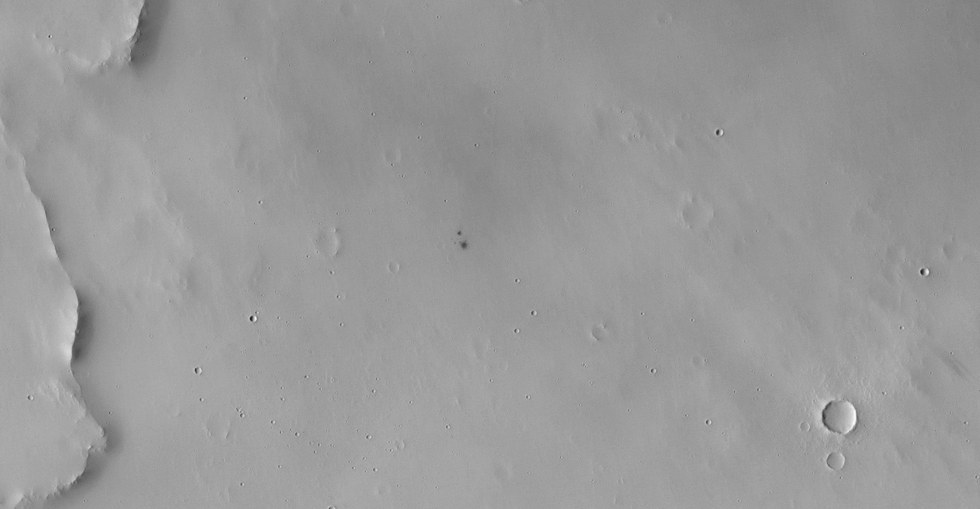Take this recent observation from NASA's Mars Reconnaissance Orbiter for example. From afar, a small cluster of dark blemishes on an otherwise pale landscape was the only indication of a meteorite impact, but on closer inspection, we realize it wasn't a single impact — it was in fact dozens all clustering around a small area in the Tharsis region of the Red Planet.
Initially detected by the orbiter's Mars Context Camera (CTX), scientists were able to determine that the impact must have occurred some time between 2008 and 2014. That detection led to a followup on Oct. 4, 2016, by the mission's High-Resolution Imaging Science Experiment (HiRISE) camera and the true nature of the impact became apparent. Two large impact craters accompanied by up to 30 smaller craters litter the scene, revealing that a meteoroid broke up in Mars' atmosphere, sending pieces of rock raining down onto the dusty surface.
The MRO regularly surveys for, studies and tracks long-term changes in fresh impact sites on Mars. These impacts not only tell us how frequent meteorite impacts are on Mars, they also provide a natural means to excavate material so we can see what minerals — that have not been exposed to the harsh weathering effects of being exposed on the Red Planet's surface — lie beneath. Also, by tracking long-term changes to the dusty material around the blast sites, we can learn something about surface winds and the movement of fine particles over time.
It is worth noting that the dark areas surrounding the impact sites isn't only ejecta that got blasted out of the crater. As the meteorites slammed into the ground, shocked air blew surface dust away, stripping the darker, fresh material bare around the crater. By analyzing the pattern of impact ejecta, planetary scientists are able to determine the direction from which the meteorites came from. In the above image, the meteoroid likely struck from the south (traveling from bottom to top).
 |
| The MRO's Mars Context Camera view of the Tharsis region where the meteorite cluster was first detected |
As Mars' atmosphere is approximately 100 times thinner than Earth's, more meteors that streak through the atmosphere make it to the ground as meteorites. And in many cases, the atmosphere isn't quite thick enough to burn-up incoming space rocks, but thick enough to cause them to break up into many pieces. So rather than getting hit by a single projectile, depending on the size of the meteor, many bits of projectile can blanket bomb a large area.
Read more at Discovery News

No comments:
Post a Comment